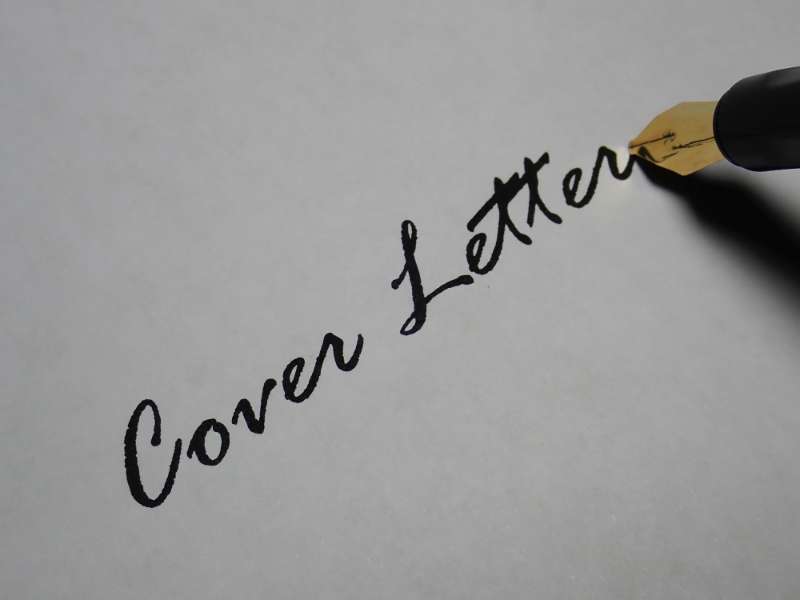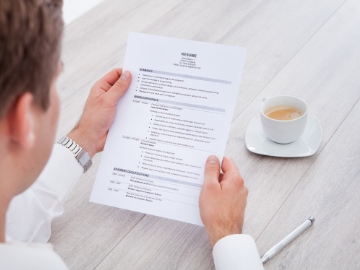What Should You Include in a Cover Letter?

Your cover letter is one of the first things your potential future employer sees. It provides a more personal profile to illustrate why you'd be a good fit for a role. The goal is to use it as a tool to really set you apart from other applicants. Cover letters are not a repeat of a resume. They expand on the most relevant information and offer a glimpse into your personality. Let's look deeper at how to write a cover letter.
Cover Letter Structure
Whether you're making a career change or applying for your first job, you're going to be writing cover letters. You should consider matching your cover letter design to your resume. Use the same online template, like the free options you can find on Canva (Home - Canva). The basic structure will include a header, introduction, body, and closing paragraph.
-
Header
Use the header for basic contact information and the date. The top left will include your name, email address, phone number, and LinkedIn address. The top right will have the date, just as you would do when writing a letter.
-
Greeting
Address the cover letter to the appropriate person. Sir/Madam doesn't suffice. Do a little investigating online for a manager's name, or call the company and ask for a name. In the following line, mention the job you're applying for and how you heard about the vacancy.
-
Paragraph 1. Interest and Compatibility
Express your interest and explain why you're attracted to the job or company. Highlight any standout skills or strengths that you think will grab the reader's attention. This could include something they specifically stressed in the job listing.
-
Paragraph 2. Skills and Achievements
Dig deeper into your skills and achievements. Don't just fill your cover letter with adjectives - use examples to demonstrate the skills you're mentioning. Concentrate on the company vision and overall goals when choosing what achievements to mention.
-
Paragraph 3. Call to Action
Allude to future commitments within the company to stress your interest. You could mention wanting to grow in the position and move up in the ranks. Finish off with a call to action. Suggesting a call or meeting demonstrates confidence in your application and eagerness to chat further.
-
Closing
It's important to close appropriately. 'Cheers' doesn't cut it. 'Sincerely' or 'Yours truly' are polite ways to sign off. If you're applying online, your name will suffice as a signature. If you're providing a printed copy, use a black or blue pen for your signature.
Tailoring Each Cover Letter
Having a base cover letter is a good start, but you'll have to tailor each one to the company and job you're applying for. This means researching where you're applying to. Understand the company values and analyze the job listing before you write it. Don't limit the cover letter to explaining how you fit the role. Go beyond your ability to do the job and explain how you could contribute to the growth of the position and the company.
Explain what you will offer to the employer and how it will be different to other applicants. Align your values with the company vision to demonstrate how your qualities will complement the existing company culture. You could even consider a P.S. message that can grab the reader's attention. This could be light humor or an emphasis on your passion for the company.
Remember - keywords! Keywords and phrases matter in resumes, and they matter in cover letters. Automated software will most likely scan your application first and decide whether someone will actually read it. Examine the job description for clear keywords and phrases and incorporate them in your cover letter.
What Doesn't Belong?
There are some things that don't belong on a cover letter. It shouldn't be longer than one page, so you don't have the space to talk about irrelevant information. You also shouldn't lie. Your skills and achievements can easily be cross-checked. Don't discuss salary expectations. If you're truly interested in a position, that won't be your main objective. Finally, don't talk badly about your old boss. Negativity towards an old job starts you off on the wrong foot, and quite frankly comes across as childish.
Final Touches
When you think your cover letter is complete, don't rush to hit send. Make sure you have a detailed email subject. For example, Social Media Marketing Manager - David Smith - Resume and Cover Letter. Your file needs a formal title too, such as David Smith - Cover Letter.
Check for errors - it could cost you the job! Proofread for spelling, formatting, grammar, or fact errors. Format the document to fit one page with 1 ½ size margins and 10-12 size font. Leave a short email to introduce who you are and why you're contacting them. Finally, don't forget the attachment!
Once you're sure you've perfected your cover letter, send it off and wait for a bite. Be sure to follow up in due course, particularly if you said you would. Not all jobs are guaranteed, but every application is a step closer to landing one.


